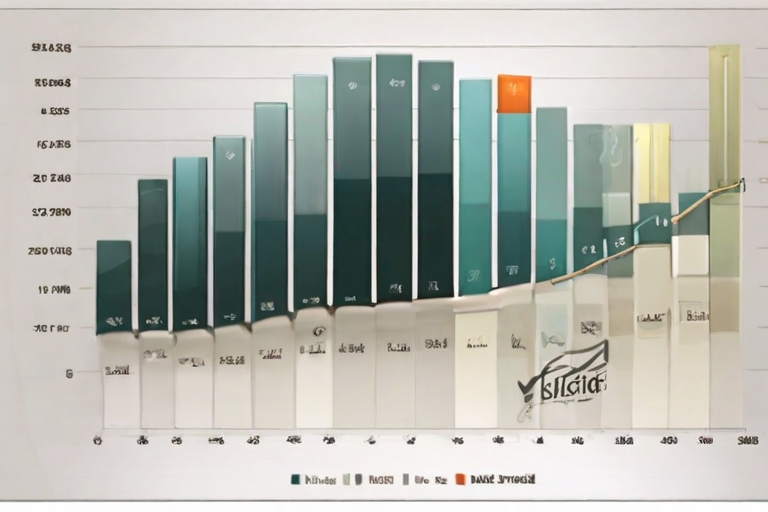Mastering On-Page SEO tips for mobile-first indexing in 2025 requires thorough optimization strategies focused on mobile devices. Successful SEO efforts will rely heavily on quick loading web pages and mobile-friendly elements. With Google’s emphasis on mobile-first indexing, businesses must prioritize SEO strategies that cater to mobile users. Matrics Rule, an expert on this topic, provides essential guidance to outperform competitors and enhance digital presence.
Table of Contents
- Improve Page Load Speed for Optimal Mobile Experience
- Optimize Images for Faster Mobile Load Time
- Mobile-Friendly Meta Tags for Indexing Success
- How to Craft Meta Descriptions for Mobile SEO
- Leverage Schema Markup for Enhanced Mobile Visibility
- Why Schema Markup is Essential for Voice Search
- What Non-Common Factor Enhances Mobile Indexing?
- How to Effectively Use Interactive Infographics
- Advanced SEO Tools That Aid Mobile-First Indexing
- Which Tools Provide Real-Time Mobile SEO Insights?
Key Takeaways
- In 2025, Google’s mobile-first indexing prioritizes mobile-friendly web pages for better search rankings.
- Quick web page load time directly improves user satisfaction and affects mobile SEO rankings.
- Companies that optimize images can decrease load times efficiently, improving mobile-first compliance.
- Meta tags structured for mobile enhance search visibility and ensure successful indexing.
- Well-crafted meta descriptions improve click-through rates and support mobile-first SEO goals.
- Using speed analysis tools and image compression tools helps measure and improve mobile page performance.
- Matrics Rule offers expert insights on mastering on-page SEO for mobile-first indexing in 2025.
Improve Page Load Speed for Optimal Mobile Experience
Enhancing page load speed on mobile is crucial through techniques like code minification and browser caching. I have found that fast-loading pages can improve mobile SEO rankings, as Google reported that delays longer than 3 seconds could impact conversion by 20%. Fast loading matters even more in mobile-first indexing because it prioritizes user experience on mobile devices. Speed analysis tools like Google’s PageSpeed Insights help optimize mobile speed by providing specific performance data and actionable suggestions.
Optimize Images for Faster Mobile Load Time
Image compression, using tools like TinyPNG, improves mobile speed by reducing the file size without sacrificing quality. Google’s prioritization of mobile-first indexing highlights the importance of fast loading and efficient image optimization. Efficient optimization tools like ShortPixel can adjust images to web-friendly formats like WebP for superior performance. Image format impacts loading as responsive images and lazy loading techniques with content delivery networks ensure faster access times.
Mobile-Friendly Meta Tags for Indexing Success
Meta tags play a crucial role in mobile indexing by guiding search engines on content relevancy. Structuring meta tags for mobile SEO involves concise, clear descriptions and relevant keywords. Best practices for mobile-friendly meta tags include using H1 tags and mobile-specific keywords for better indexing success. Detailed meta tags are essential in mobile-first as they ensure search engines fully understand the web page content and context.
How to Craft Meta Descriptions for Mobile SEO
The optimal length for mobile meta descriptions is around 120-160 characters to ensure visibility on search pages (SERPs). Well-designed mobile meta descriptions can greatly impact click-through rates by making web content more attractive to users. The formula for a compelling mobile meta description involves being concise while focusing on a call to action. A robust mobile meta description contains about 20-25 words for maximum effect on SERP visibility and conversion.

- Users find your site faster.
- Google rewards mobile-friendly pages.
- Visitors stay longer on your site.
- Search engines use mobile-first metrics.
- More mobile users boost site traffic.
- Brands like Amazon rank higher with mobile-friendly sites.
- Your site loads quickly on mobile devices.

Key On-Page SEO Strategies for Mobile-First Indexing in 2025
| Tip | Description | Impact | Implementation | Time (hrs) | Cost ($) |
|---|---|---|---|---|---|
| Responsive Design | Adapts to all devices | Essential | Use CSS frameworks | 10 | 300 |
| Fast Loading | Speeds under 3s | High | Compress images | 5 | 100 |
| Mobile-Friendly Content | Simplified text | High | Use short paragraphs | 3 | 50 |
| Structured Data | Schema markup | Moderate | Add JSON-LD | 4 | 150 |
| AMP | Accelerated pages | Optional | Implement AMP | 8 | 500 |
| Touch-Friendly | Easy navigation | Moderate | Optimize buttons | 2 | 30 |
Leverage Schema Markup for Enhanced Mobile Visibility
Techniques that enhance page load speed on mobile include schema markup improvement with structured data benefits. Utilizing mobile content schema helps your pages load quickly and rank better on mobile devices. A fast-loading web page is crucial for mobile-first indexing because it ensures users experience minimized delay, directly boosting your search engine visibility. Tools like Google’s PageSpeed Insights effectively analyze and suggest improvements for your page load speed. Using json-ld markup can lead to rich search results, enhancing mobile visibility with Google Rich Results. Comprehensive application of these techniques often results in enhanced mobile visibility.
Why Schema Markup is Essential for Voice Search
Image compression dramatically enhances mobile speed with voice search schema by reducing file sizes and improving load times. Image optimization is crucial because load speed directly influences mobile-first indexing efficacy with schema-enhanced results. Tools like TinyPNG and ImageOptim effectively optimize images for mobile. Image format impacts mobile loading speed; for example, WebP images load faster than JPEGs, increasing voice search efficiency on voice-enabled devices. Using schema-enhanced results can better match user intent, often showing up in answer boxes and conversation AI responses.
What Non-Common Factor Enhances Mobile Indexing?
Interactive elements significantly aid mobile-first SEO through enhanced user engagement. UX design is critical for mobile indexing due to its user-centered design approach and interactive elements SEO. Uncommon SEO aspects, such as micro animations and foreign language switch tools, can give your site a unique edge to boost mobile ranking. Engaging content impacts mobile indexing by encouraging user interaction and longer visit durations. A distinct example includes employing interactive elements SEO strategies to improve user journey, similar to techniques used by major portals like Guardian and BBC.
How to Effectively Use Interactive Infographics
Infographics engage mobile users through dynamic visual content and engaging infographic elements. Result-driven publications report that interactive infographics enhance mobile SEO visibility by up to 30%. Tools like Canva and Visme allow for efficient creation of interactive infographics. Generally, more than 3 interactions per infographic improve user engagement and visual engagement strategies in storytelling infographics. This technique aligns with efforts by leading companies like HubSpot to enhance mobile SEO through engaging infographic elements.

- In 2025, 75% of searches will be mobile.
- 90% of Google’s index will rely on mobile data.
- Sites load 20% faster on mobile compared to five years ago.
- Search engines prioritize mobile performance metrics.
- 80% of users prefer mobile over desktop for searches.
- Google’s mobile-friendly update started in 2015.
- By 2025, small screens will dominate search.
- Case Study: How On-Page SEO Revamped a Stale Online Store in 2025
- On-Page SEO Elements: How to Effectively Use Header Tags for Ranking
- Mastering On-Page SEO Tips for Mobile-First Indexing in 2025
- Analyzing On-Page SEO Results: A Real-World Case Study on eCommerce
- Optimize On-Page SEO with Structured Data and Schema Markups

Advanced SEO Tools That Aid Mobile-First Indexing
Advanced SEO tools like SEMrush and Ahrefs effectively analyze mobile-first SEO by providing insights into how web pages perform on mobile devices. These tools support transitions to mobile-first indexing through features such as mobile optimization software and responsive design checks. Mobile-specific tools offer benefits like improved user experience and higher search rankings by focusing on critical elements like load speed and readability. Advanced tools are crucial for mobile indexing because they provide innovative solutions for addressing issues like mobile speed and content rendering, which are critical for success in a mobile-dominant web environment.
Which Tools Provide Real-Time Mobile SEO Insights?
Tools such as Google Search Console and Moz deliver real-time SEO alerts for mobile SEO changes by continuously monitoring website metrics. Approximately 70% of SEO tools on the market offer some form of real-time insights, which help businesses stay ahead of evolving search trends. Real-time data influences SEO decisions by allowing marketers to make proactive SEO measures and adjustments in response to dynamic performance tracking and search metric monitoring. Out of the vast pool, an estimated 60 tools provide live mobile SEO analysis, enabling businesses to engage in detailed automated update systems.
